Features of keeping aquarium fish cichlids
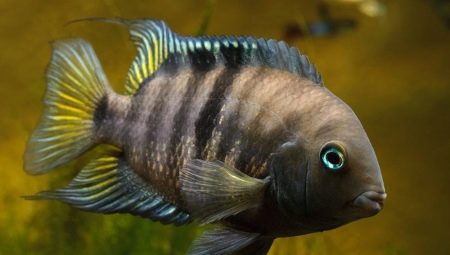
Cichlid aquarium fish are not only beautiful and interesting, but also smart creatures, and this is a rather rare property for aquarium inhabitants. These unusual creatures will decorate an artificial reservoir and become a real pride of the owner, but it is important to maintain all conditions for a favorable existence of fish and follow the rules of care. And then the pets will delight their owner for as long as possible.
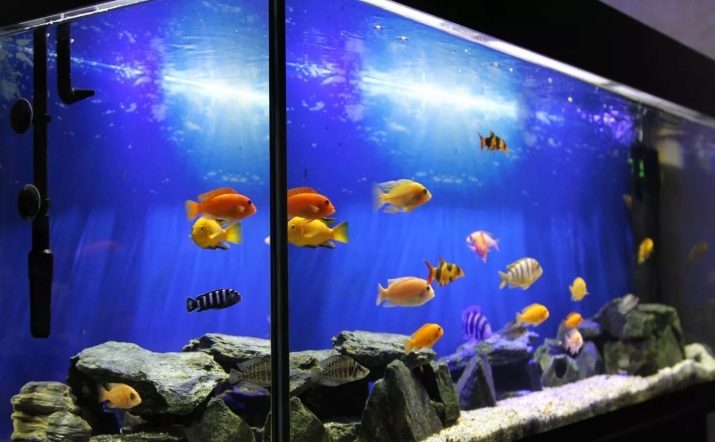
Description and character
Cichlids belong to the order of perchiformes; there are several varieties of them, differing in color and shape. The same goes for the size of the fish. For example, shell species do not grow more than 2 cm, and their congeners, called Umbie, can reach half a meter. In natural conditions, they can grow even up to a meter. Small ornamental aquariums will do well with smaller species, while keeping the Umbie will require a huge container.
It is known that in nature some species are no longer found, others are on the verge of extinction. In general, these fish prefer to settle in the waters of Asia, Africa, Latin America. At home, with proper maintenance, these unusual creatures live up to 8-10 years.
Life span depends not only on care, but also on genetic reasons. For example, in pet stores you can buy very colorful fish with unusual colors. Such individuals were bred artificially, respectively, their lifespan is significantly shorter.
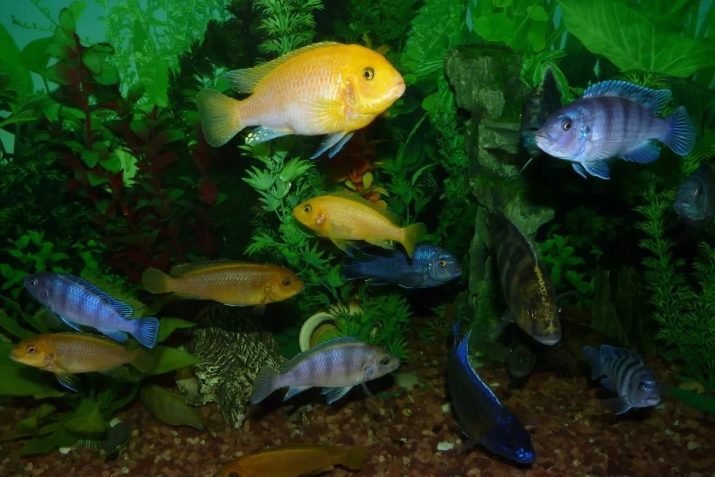
The most unusual character trait of cichlids is the ability to recognize the owner.... This is expressed in the fact that from the owner the fish is ready to take food from the hand, but from a stranger it is not. Also, these creatures are interesting because already in adolescence they choose a mate for themselves for life. In addition, this is a rare case when parents take care of eggs, do not allow predators to approach them, fan them with fins. Also, adult fish keep an eye on the hatched fry.
Cichlids love to crawl in the ground, and large species can deliberately uproot aquarium plants and turn rocks. It is very interesting to observe the behavior of these creatures. Their aquarium has its own world, its own life, which depends on the responsibility of the owner.

Conditions of detention
When populating an aquarium with cichlids, it is better to refuse to buy representatives of a species of different origins. So, it is not recommended to breed South American and African individuals together. As already mentioned, young parents become aggressive during the spawning season and often come into conflict with their neighbors who swim too close to the eggs. These fish are more restrained towards their relatives.
Even small cichlids will need a glass aquarium with a volume of at least 60 liters to live. For large species, a “dwelling” of 200-400 liters is needed. Depending on the variety, the configuration of the aquarium is also selected. For example, for individuals with an elongated body, a low tank should be purchased, while a high capacity is more suitable for scalars and discus. Constant water temperature should be within 21-27 degrees, for this, do not forget to purchase a special aquarium thermometer, if it is not included with the aquarium by default.
Remember about artificial lighting, but do not leave the "glass house" in direct light beams - the light should be soft, muffled, diffused.
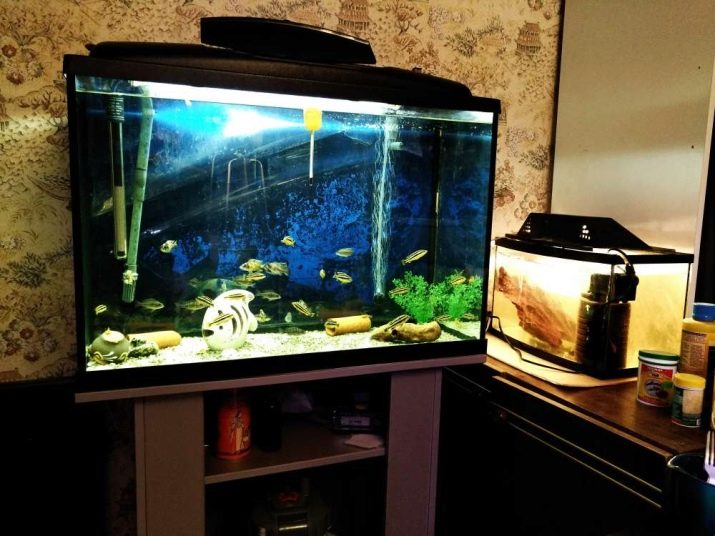
Plant hard-leaved plants in sandy soil. The fish will quickly eat vegetation with softer greens. Don't forget about stones, driftwood, grotto and other decorative elements. Firstly, these items perform an aesthetic function, and secondly, they serve as a shelter for cichlids.
At the same time, remember that these active creatures love not only to visually study objects on the way, but also to try to turn them over, therefore for large individuals, buy the heaviest "decorations". Try to arrange all decorative items in such a way that they become boundaries for the habitats of certain species. The fact is that cichlids huddle in flocks and together "settle down" their territory, protecting it from outsiders.
Do not forget to get a quality filter, the power of which will depend on the volume of the aquarium, and equipment for aeration.
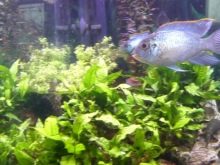
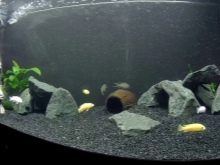
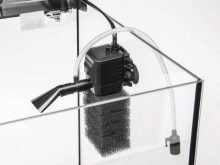
Care
Aquarists recommend following a number of rules for caring for fish.
- Drain a third of the water once a week and add fresh in the same amount. Get a siphon that will clean the bottom and soil from food debris and waste.
- Monitor the behavior of the fish every day. If an individual seems passive and has unnatural behavior, quarantine it so that the disease does not spread to other inhabitants of the aquarium.
- Pay special attention to feeding. The basis of the diet should be tubifex, daphnia, bloodworms, special food, vegetation in granules, animal food (for example, beef or pork heart).
- Do not overuse frequent water changes. Each aquarium is filled with its own world of bacteria, which, under the influence of the filter, begin to remove dirt and debris. It takes time for bacteria to fully colonize, and without them, the fish will feel uncomfortable. Therefore, with a complete change of water, always leave at least some part of the old one so that the cichlids adapt to new conditions faster, because for them changing the liquid is like moving for a person.
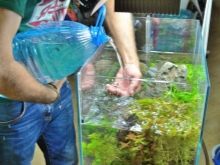
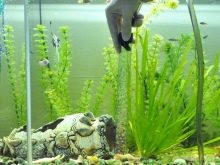

Diseases
Common causes of various fish diseases are inadequate feeding and non-observance of temperature. The most common ailment for cichlids is ichthyophthiriosis. It can be recognized by the compressed fins and the scratching of the fish on the ground. A white bloom is visible on the body.
In general, cichlids have rather good health, but with an illiterate content, their immunity decreases, and it is a weak immune system that becomes the main reason for infection with ichthyophthiriosis. Saprolegniosis is another disease that often affects aquarium fish. The symptoms are fungus on the body of marine life.
To avoid diseases, it is important to feed the fish correctly. So, immunity decreases if aquarium pets do not receive live food for a long time, because it contains amino acids important for health. In order not to catch a cold cichlids, you must always monitor the temperature of the water.
It is customary for a sick individual to be deposited in a separate container and treated; at this time, all other inhabitants of the aquarium undergo preventive treatment.
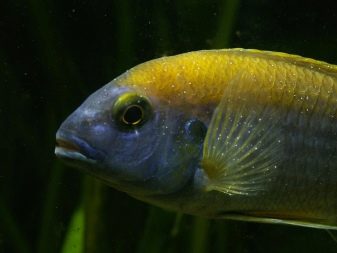
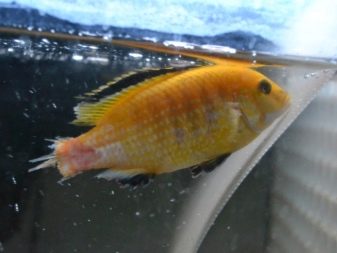
Breeding
Reproduction of cichlids differs from the same process in other aquarium fish. Some species carry offspring in the mouth, while others attach eggs to aquarium vegetation. The parents take care of the fry until they can get food on their own. Both the female and the male protect the young from enemies. At first, parents feed their babies with secretions released from their bodies, or regurgitate crushed food.
To speed up the breeding process, it is recommended to increase the water temperature by 2-3 degrees. The cichlid family chooses a flat stone as a spawning area, so do not forget to put one on the bottom. Further, the female and the male themselves organize a place for breeding offspring: they will clean the surface, hide future children behind hills of soil. When the eggs are laid and the male is fertilizing them, it is important not to disturb the pets for a couple of hours. If individuals reproduce by incubating in the mouth, then the female swallows eggs and milk herself, then fertilization is carried out in the throat sac.
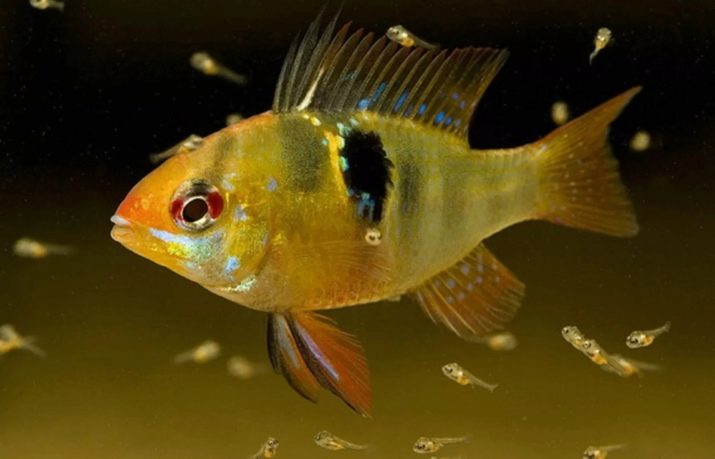
You will learn more about what to look for when buying cichlids below.








